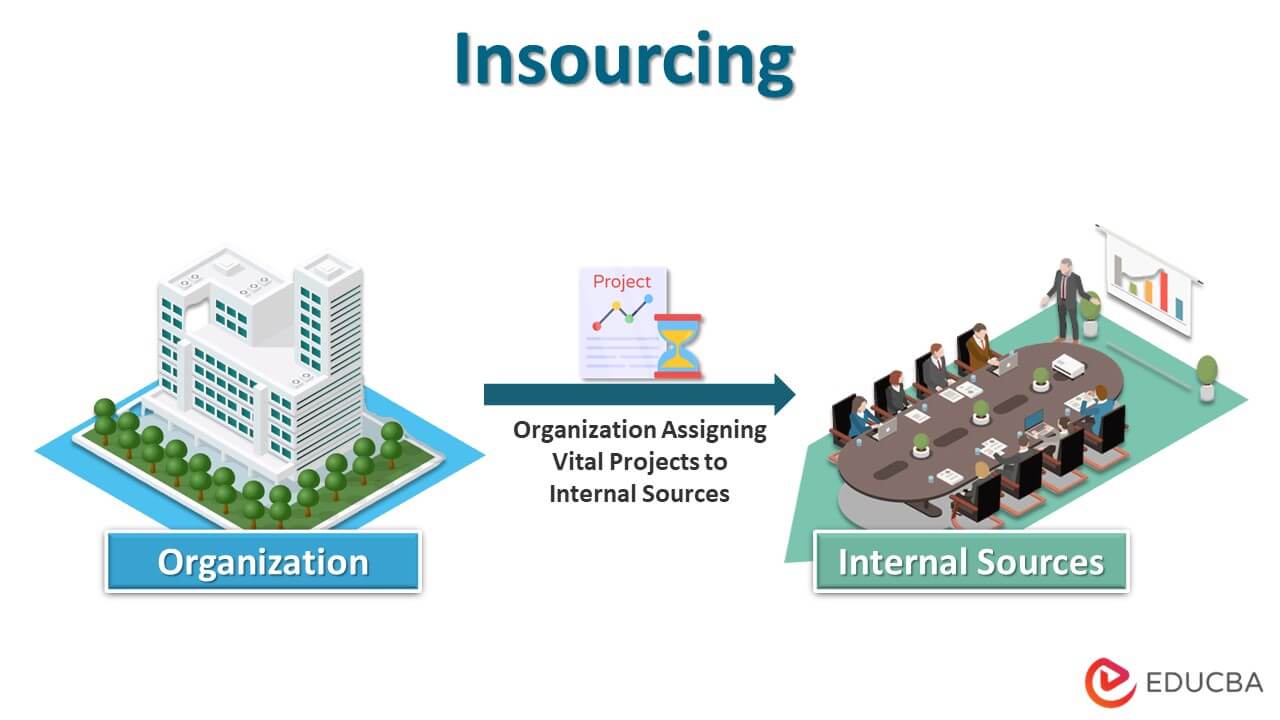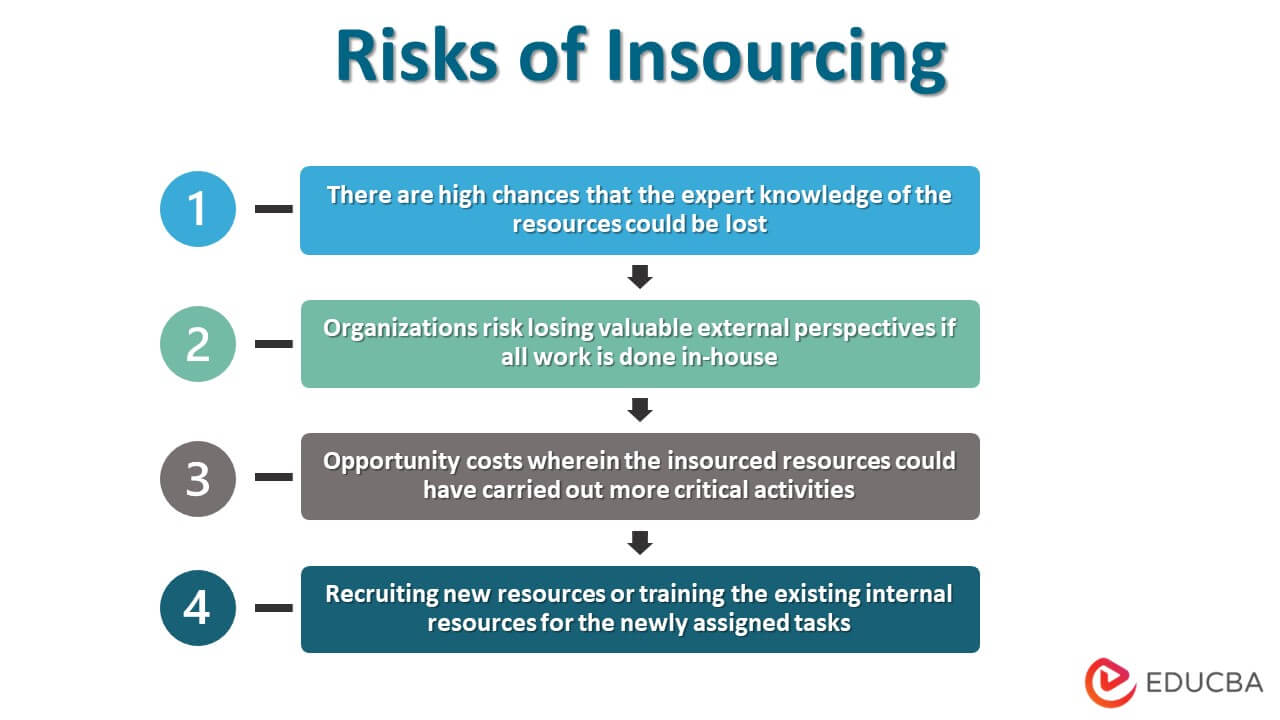Updated July 12, 2023

What is an Insourcing?
“Insourcing” refers to utilizing internal resources for a project instead of hiring any third party. In other words, someone from within the organization is assigned the vital project instead of giving it to someone outside the organization. In this way, the project knowledge and expertise remain within the organization, and the risk of compromise is largely mitigated. Typically, it comes into play while setting up new organizational processes.
Key Takeaways
- Insourcing uses internal resources for a vital project instead of hiring any third party.
- Some of the significant benefits of Insourcing include a higher degree of operational control, customized solution, and better integration of organizational values.
- There are a few challenges of Insourcing, such as higher costs and difficulty in identifying resources.
How Does Insourcing Work?
To set up Insourcing within an organization, the below-mentioned steps need to be followed:
- The management must figure out the project’s various aspects that must be insourced. It would involve assessing all the financial and non-financial factors associated with the project.
- The management must evaluate the available resources within the organization to determine whether or not they could carry out the assigned task successfully if provided additional training. If the existing staff is incapable, they must hire new resources for the project.
- In some cases, the management might have to change the organizational structure to champion the new project, which might involve redefining job descriptions, training, sizing, etc.
- The management must chalk out a detailed implementation strategy while taking cognizance of the associated risks of the insourcing process.
Example of Insourcing
Let us look at an example to understand the concept of Insourcing. Let us assume XYZ Fashion. It is a large apparel manufacturing company launching a new brand to venture into the kids’ segment. The company plans to use social media to promote its new launch for the first time. Although the company has a dedicated marketing department, it has never worked on social media campaigns for a new product launch. So, the management is trying to figure out a way to ensure that the launch smoothly occurs.
Given that the stakes are very high as it is launching a brand new product line, the company decided to hire a third party for the social media campaign for the initial phase and then gradually shift the responsibilities to its existing marketing team. In the meantime, the company would train its marketing team to insource the task at a later stage comfortably.
Reasons for Insourcing
The following are some of the reasons driving insourcing initiatives:
- Today’s businesses must be agile as they intend to expand while reducing cycle time. Many experts believe that Insourcing gives an edge in such a scenario as it offers better internal control when compared to outsourcing.
- If outsourcing quality is not up to the mark, it can have severe financial and reputational consequences. Insourcing helps in evading such unfavorable instances.
- When cross-functional teams belong to the same organization, they can trust each other, crucial for social capital and knowledge sharing. This is one of the main advantages of Insourcing that an organization enjoys.
Risks of Insourcing
Some of the risks associated with Insourcing include:
- First, if existing resources are used for Insourcing, there are high chance that the expert knowledge of the resources could be lost.
- Organizations risk losing valuable external perspectives if all work is done in-house, which increases the risk of insular thinking.
- It can result in opportunity costs wherein the insourced resources could have carried out more critical activities.
- It constantly requires recruiting new resources or training the existing internal resources for the newly assigned tasks.
Benefits of Insourcing
Some of the significant benefits are as follows:
- In Insourcing, the management has complete control over every process, unlike outsourcing, where it has to share some degree of autonomy with a third party.
- It takes note of the pain points of a process based on which the final tailored solution is provided.
- The organization aligns its values and motivations with those of the insourced team, considering them an integral part.
- It helps build teams with specific skill sets and knowledge, which reduces cycle time and speeds up project delivery.
Disadvantages of Insourcing
Some of the major disadvantages are as follows:
- In the case of Insourcing, hiring new resources with specific skill sets or training the existing resources might result in higher costs than outsourcing.
- In some cases where time is of the essence, it becomes tough to identify appropriate resources for the new projects at such short notice.
Conclusion
Organizations that value the security of the knowledge base and organizational culture must opt for Insourcing as it suits their requirements. However, in the process, the companies need to overcome some of their challenges, which primarily revolve around the constant pressure of hiring. Once overcome, it can offer many advantages, such as better control, tailored solution, and better integration of organizational values.
Recommended Articles
This is a guide to Insourcing. Here we discuss the Insourcing definition, working, example, reason, risk, benefits, and disadvantages. You may also have a look at the following articles to learn more –


